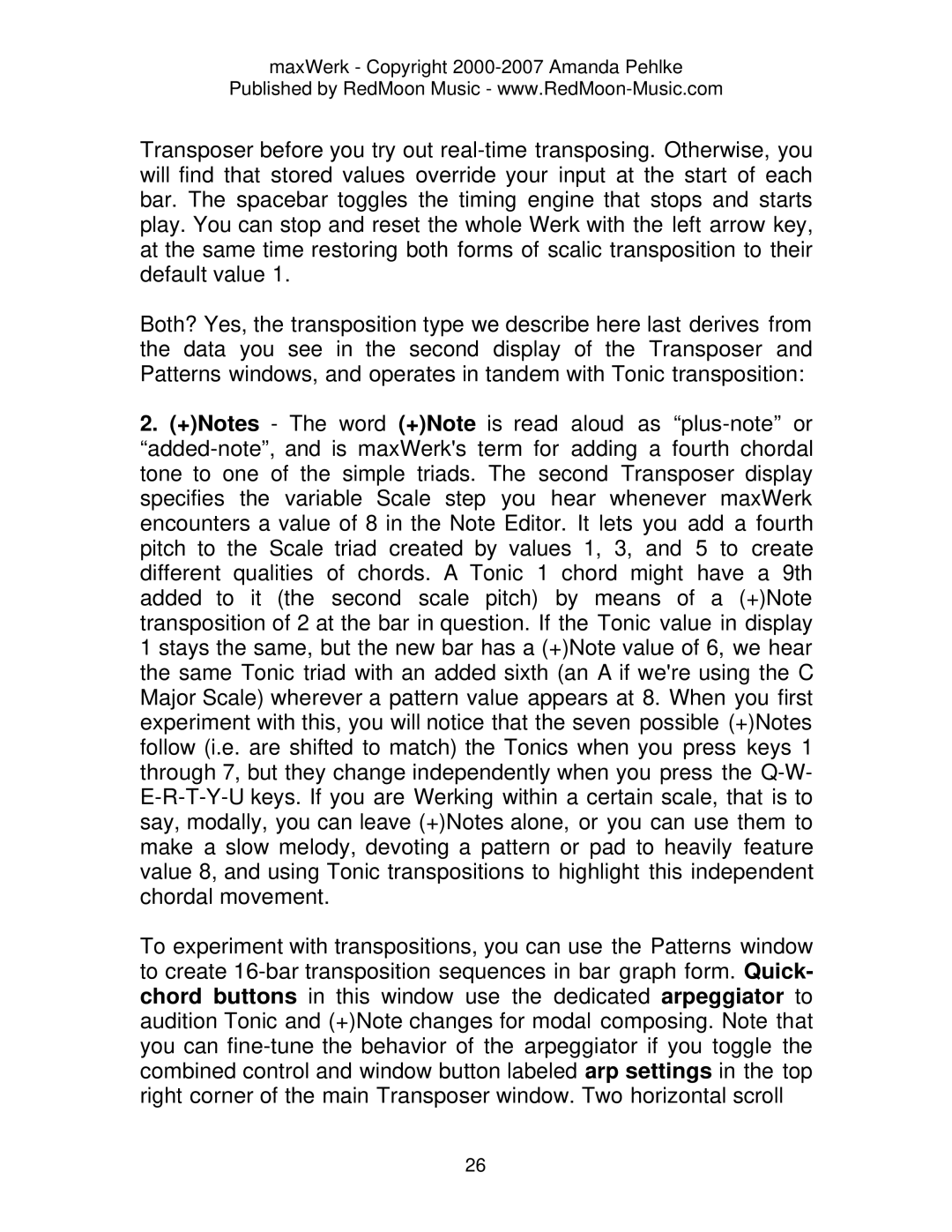maxWerk - Copyright 2000-2007 Amanda Pehlke
Published by RedMoon Music - www.RedMoon-Music.com
Transposer before you try out real-time transposing. Otherwise, you will find that stored values override your input at the start of each bar. The spacebar toggles the timing engine that stops and starts play. You can stop and reset the whole Werk with the left arrow key, at the same time restoring both forms of scalic transposition to their default value 1.
Both? Yes, the transposition type we describe here last derives from the data you see in the second display of the Transposer and Patterns windows, and operates in tandem with Tonic transposition:
2.(+)Notes - The word (+)Note is read aloud as “plus-note” or “added-note”, and is maxWerk's term for adding a fourth chordal tone to one of the simple triads. The second Transposer display specifies the variable Scale step you hear whenever maxWerk encounters a value of 8 in the Note Editor. It lets you add a fourth pitch to the Scale triad created by values 1, 3, and 5 to create different qualities of chords. A Tonic 1 chord might have a 9th added to it (the second scale pitch) by means of a (+)Note transposition of 2 at the bar in question. If the Tonic value in display
1stays the same, but the new bar has a (+)Note value of 6, we hear the same Tonic triad with an added sixth (an A if we're using the C Major Scale) wherever a pattern value appears at 8. When you first experiment with this, you will notice that the seven possible (+)Notes follow (i.e. are shifted to match) the Tonics when you press keys 1 through 7, but they change independently when you press the Q-W- E-R-T-Y-U keys. If you are Werking within a certain scale, that is to say, modally, you can leave (+)Notes alone, or you can use them to make a slow melody, devoting a pattern or pad to heavily feature value 8, and using Tonic transpositions to highlight this independent chordal movement.
To experiment with transpositions, you can use the Patterns window to create 16-bar transposition sequences in bar graph form. Quick- chord buttons in this window use the dedicated arpeggiator to audition Tonic and (+)Note changes for modal composing. Note that you can fine-tune the behavior of the arpeggiator if you toggle the combined control and window button labeled arp settings in the top right corner of the main Transposer window. Two horizontal scroll
